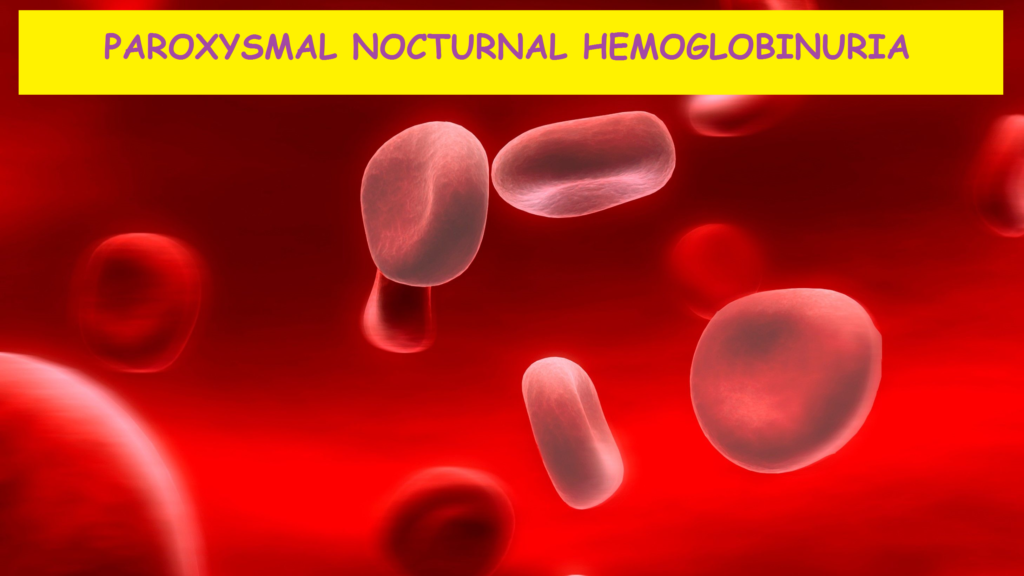PAROXYSMAL NOCTURNAL HEMOGLOBINURIA (PNH)
Paroxysmal nocturnal hemoglobinuria (PNH) is a very rare form of blood disorders, it is acquired clonal hematopoietic stem cell disorder that results in the sensitivity that is abnormal in the red blood cell membrane to lysis by complement and therefore hemolysis.
Free hemoglobin is released into the blood that scavenges nitric oxide and appreciates and promotes male erectile dysfunction and esophageal spasms, kidney damage, and thrombosis.
When patients reports episodic hemoglobinuria resulting in brown reddish brown urine. Hemoglobinuria is most often noted in the morning first urine due to drop in blood pH levels while sleeping that facilitates this hemolysis.
Besides anemia these patients are prone to thrombosis, especially within hepatic and mesenteric veins and central nervous system veins (sagittal vein) and skin vessels. As this is a hematopoietic stem cell disorder, paroxysmal nocturnal hemoglobinuria disorder may appear in the setting of aplastic anemia or myelodysplasia with possible progression to acute myeloid leukemia (AML). It is very common in that patients in which idiopathic aplastic anemia have a small paroxysmal nocturnal hemoglobinuria (PNH) clone i.e. less than 2% on blood or bone marrow analysis; but this should not be considered true paroxysmal nocturnal hemoglobinuria (PNH), especially in the absence of thrombosis or reticulocytosis.
Since the episodic hemolysis is mainly intravascular, urine hemosiderin test is very useful. Iron deficiency is commonly present, related to chronic iron loss from hemoglobinuria. White blood cells (WBC) count and platelet count may be decreased in the setting of aplastic anemia.
The best test is flow cytometry of blood granulocytes, erythrocytes, or monocytes to demonstrate CD55 and CD59 deficiency of both. The FLAER assay (fluorescein labeled proaerolysin) by flow cytometry is more sensitive.
Bone marrow karyotype is either normal or clonal abnormality. Bone marrow morphology is differ and may show either hypoplasia or erythroid hyperplasia or may be both.

TREATMENT
Patients have mild disease with paroxysmal nocturnal hemoglobinuria (PNH) does not requiring intervention. Allogenic hematopoietic stem cell transplantation may be curative in severe cases or in those occurring in the setting of previous aplastic anemia or myelodysplasia.
In patients with severe hemolysis (usually requires blood transfusions) or thrombosis or in both cases eculizumab is very useful. Eculizumab improves quality of life and reduces transfusions, reduces hemolysis, fatigue and risk of thrombosis.
Iron replacement is given for the treatment of iron deficiency, which may improve the anemia while also causing transient increase in hemolysis, for unclear reasons corticosteroid are effective in decreasing hemolysis.
For Informational purpose only. Consult your Physician for advice.